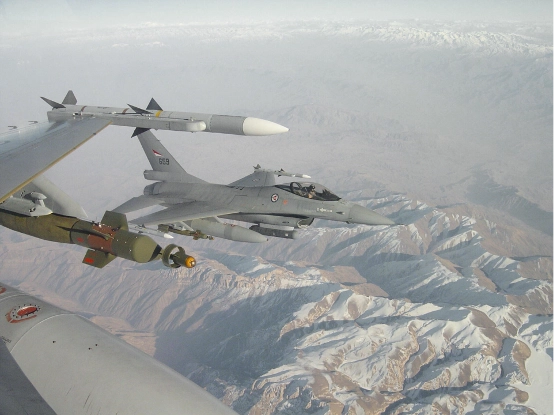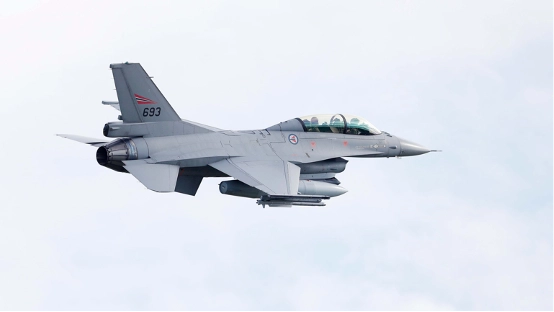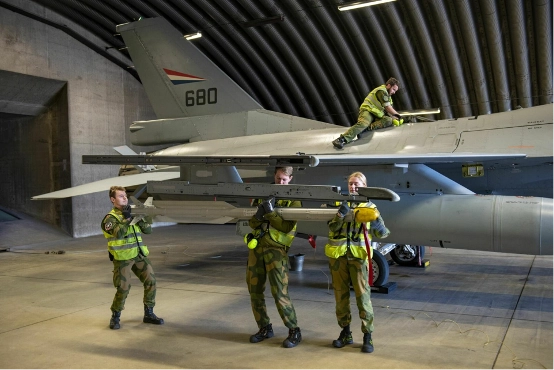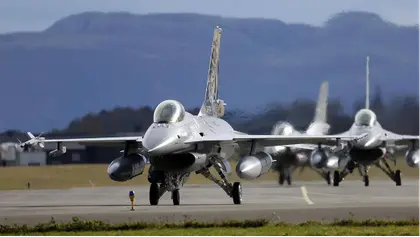Norway will transfer a total of 22 F-16s to Ukraine, of which 12 are fully combat-capable. Another 10 planes that may or not still be airworthy, and some airframes that might require substantial overhauls, the popular online newspaper Nettavisen reported.
Engines, auxiliary materials, simulators, spare parts and other relevant equipment would be included in the donation, the article said. Other reports said the planes would be a mix of single-seat fighter jets and twin-seat fighter/trainer jets.
JOIN US ON TELEGRAM
Follow our coverage of the war on the @Kyivpost_official.
The Norwegian Air Force, in January 2022, retired its fleet of Lockheed Martin-manufactured F-16 fighters after 30 years of operation. Oslo, in 2023, sold 32 of its old F-16s to the Romanian Air Force, and in late 2023, it transferred two F-16 trainers to Denmark for Ukrainian pilots there to practice combat missions on.
A fourth-generation jet manufactured since the 1970s and flown by more than two dozen air forces worldwide, the F-16 is by many measures the most popular and successful fighter aircraft in operation today.


From Aircraft to Trenches: Transfers of Air Force Technicians to Infantry Spark Controversy, Raise Alarm
According to Norwegian media reports, the F-16 models Ukraine will receive from Norway will have been upgraded with 2000s-era electronics and sensors, making them technologically superior to any aircraft operated by the Ukrainian Air Force, and comparable to or better than most fighters operated by the Russian Air Force.
The Kremlin’s most advanced fighters – particularly the Su-35 and Su-57 fighter jets – are equipped with radars and other sensors superior to the electronics aboard the F-16s Ukraine is on track to receive. That edge could give Russian pilots, in those aircraft, a powerful first-shot advantage in detecting and firing on a Ukrainian pilot in an F-16.
The Russian Air Force has, since the Kremlin’s 2022 invasion of Ukraine, operated small numbers of Su-35 jets in combat, almost always well behind front lines. Aside from even rarer sorties claimed to have taken place by Moscow-controlled media, there is little evidence of deployment of the even more advanced Su-57 to the Russo-Ukrainian War.
Although the F-16s Ukraine is due to receive are by most measures inferior to the best Russian combat aircraft in air-to-air combat, most of the F-16s will reportedly carry a still battle-capable AN/APG-66(V)2 radar, as well as modern targeting pods, on-board computer, on-board displays, EW systems, navigation, communication, and low-altitude flight systems.
Taken together, that avionics package in the hands of a capable Ukrainian pilot is likely to give Kyiv a powerful strike aircraft superior to any attack plane operated by the Russian Air Force.
Netherlands has announced it would provide to Ukraine up to 42 F-16 fighters, like Norway’s, being retired after decades of use. Denmark has promised 19 aircraft. Most but not all planes are currently airworthy, news reports from those countries have said. Most reportedly are equipped to current NATO standards with electronics and avionics similar to the F-16s en route from Norway.
Were all the Dutch, Danish and Norwegian F-16s to be fully battle-ready, and were aircraft devoted to training not considered for missions, then the theoretical maximum 75-85 American-built F-16 fighters the Ukrainian Air Force would have available for commitment to combat in skies over Ukraine would still be heavily outnumbered by the Russian Air Force.
The military information website Zona Militar in a recent article reported the US government has approved the transfer of a total of 65 F-16s to Ukraine out of Danish, Dutch and Norwegian stocks. According to that report, the estimated total value of the three nations’ donation of F-16s to Ukraine will be in excess of $3 billion, making delivery of the US aircraft to Kyiv the most substantial single weapon arms assistance project by Ukraine’s allies, by a significant margin.

Aside from aircraft donated by Norway, Denmark and the Netherlands, the countries Belgium and Romania have committed to helping Ukraine operate F-16s by donating armaments or training facilities. The Netherlands in March announced it would, aside from transferring aircraft, finance the purchase of $150 million worth of air-to-air missiles for the fighters.
Speaking during Congressional testimony on Tuesday, Deputy head of the Pentagon Celeste Wallander, confirmed the US was, aside from giving a green light to NATO allies to turn over American fighter jets to Kyiv, not substantially involved on the material side getting American F-16 jets into the hands of Ukrainian pilots.
“We support the provision of F-16s to [Ukraine] by European countries, and the number that they are going to provide corresponds to the request of the Ukrainians at the moment,” Wallander said.
Greece, according to Athens news reports, is considering a 32-aircraft sale of its old F-16s to Ukraine, but the deal still requires US approval and financing.
Long-term Ukrainian operation of F-16s no matter the source – provided they survived combat – would almost certainly generate solid income for the US corporation General Dynamics, the main manufacturer of F-16 parts, and the US corporation Raytheon, the main manufacturer of the F-16’s main air-to-air weapons the AIM-120 AMRAAM and AIM-9 missiles.

General Christopher Cavoli, commander of NATO forces in Europe, in Tuesday Congressional testimony said that Ukrainian pilots and ground crew are training to fly F-16s at multiple bases within the Alliance, and that although the preparation is advancing, progress is slow due to the need for the Ukrainians to learn military aviation-capable English, and then transition from operating a Soviet-era airframe to a modern NATO-standard combat jet.
Some pilots and crew are in basic flight training and have not started hands-on practice with F-16s, while others have graduated to training combat flights and operations. Ukrainian air crew preparation is taking place “in several different countries,” Cavoli said.
The primary bottleneck to the Ukrainian Air Force’s fielding F-16s in quantity is not limited numbers of airframes but how many combat pilots and ground crew Kyiv can spare from the actual war, to train on transition to the F-16, Cavoli said.
According to Ukrainian mil-bloggers, the first six F-16s with pilots and ground crew will reach Ukraine in June or July. Earlier deadlines had predicted the arrival in April or May.
You can also highlight the text and press Ctrl + Enter










